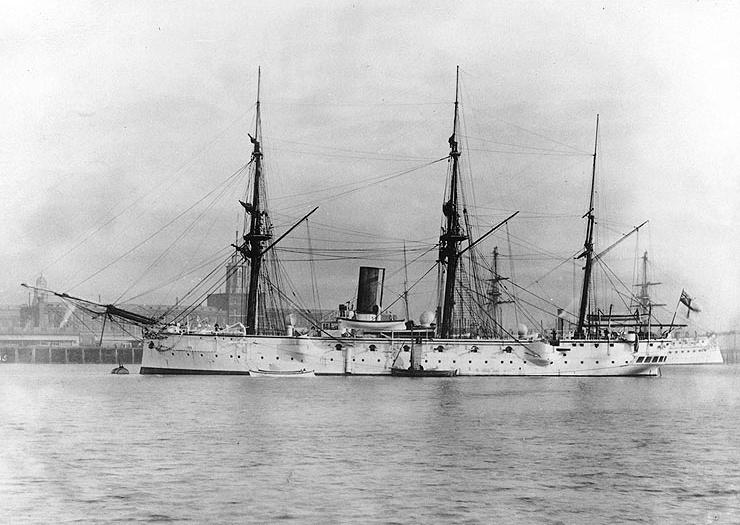
In a display of exceptional naval prowess, the Royal Navy cruiser HMS Calliope emerged as the sole survivor of a devastating cyclone that struck Apia, Samoa, in March 1889. The cyclone, which obliterated the American and German warships in a colonial power standoff, allowed Calliope to navigate through near-certain destruction under the command of Captain Henry Kane. The cyclone incident unfolded amid the geopolitical tussle for dominance over the Samoan Islands, a strategic archipelago in the Pacific Ocean.

The fierce tropical cyclone wreaked havoc on 15 and 16 March, 1889, pummeling the harbor with relentless winds and waves that ultimately claimed seven warships and over 200 lives. Amid the chaos, the HMS Calliope, powered by her steam engines and the determined spirit of her crew, steamed out of the tempestuous harbor to safety, managing to avoid the deadly reefs that claimed the other vessels. The audacious escape was greeted with cheers of solidarity and respect from the imperiled American flagship, Trenton, which recognized the valor displayed by their British counterparts.

The subsequent wreckage highlighted the destructive power of nature and underscored the political complexities in Samoa, where the United States, Germany, and Britain had each sought influence. The post-cyclone period saw a shift towards peace, as the powers navigated the delicate situation to avoid further conflict, leading to the eventual partitioning of the islands into American and German territories under the Tripartite Convention of 1899.

HMS Calliope’s survival became a symbol of national pride and naval excellence. Her incredible story was chronicled in an account sent to Queen Victoria, emphasizing the gallantry of the sailors and the indefatigable spirit of the Royal Navy. Following her retirement in 1907, the ship served as a drill ship on the River Tyne at Newcastle for the Royal Naval Volunteer Reserve, and even after being sold for scrap in 1951, the name HMS Calliope lived on at the establishment, which moved ashore to Gateshead in 1968.
The cyclone of 1889 remains etched in naval history as a testament to human courage and the perils of maritime warfare, where even the might of naval powers is at the mercy of the untamed forces of nature.
Relevant articles:
– H.M.S. Calliope : an account of the visit to Apia, Samoa, March 1889, gathered chiefly from the columns of the Sydney daily papers / compiled by J.S.S., Royal Collection Trust
– Typhoons and Hurricanes: The Storm at Apia, Samoa, 15, United States Navy (.mil)
– Samoan crisis, Military Wiki | Fandom

